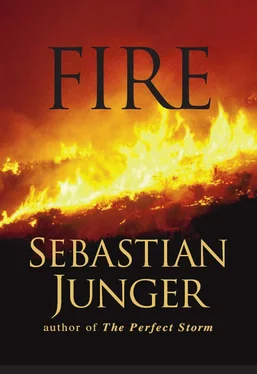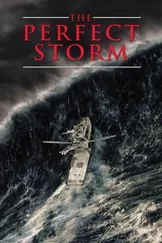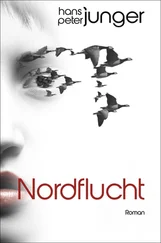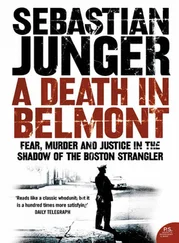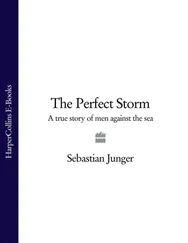“Bequia men, they brave,” he says, shaking his head. He speaks in a patois that sounds like French spoken with an Irish brogue. “They brave too much.”
Ollivierre hunts humpback whales from a twenty-seven-foot wooden sailboat called the Why Ask. As far as he’s concerned, his harpooning days are over, but he’s keeping at it long enough to train a younger man, forty-three-year-old Arnold Hazell, to do it. Otherwise the tradition—and the last remnant of the old Yankee whaling industry—will die with him. When they go out in pursuit of a whale, Ollivierre and his five-man crew row through the surf of Friendship Bay and then erect a sail that lets them slip up on whales undetected. Ollivierre stands in the bow of his boat and hurls a harpoon into the flank of an animal that’s five hundred times as heavy as he is. He has been knocked unconscious, dragged under, maimed, stunned, and nearly drowned. When he succeeds in taking a whale, schools on Bequia are let out, businesses are closed, and a good portion of the forty-eight hundred islanders descends on the whaling station to watch and help butcher, clean, and salt the whale.
“It’s the only thing that bring joy to Bequia people,” says Ollivierre, a widower whose only son has no interest in whaling. “Nobody don’t be in their homes when I harpoon a whale. I retired a few years ago, but the island was lacking of the whale, and so I go back. Now I’m training Hazell. When I finish with whalin, I finish with the sea.”
When a whale is caught, it’s towed by motorboat to a deserted cay called Petit Nevis and winched onto the beach; the winch is a rusty old hand-powered thing bolted to the bedrock. Butchering a forty-ton animal is hard, bloody work—work that has been condemned by environmentalists around the world—and the whalers offer armloads of fresh meat to anyone who will help them. Some of the meat is cooked right there on the beach (it tastes like rare roast beef), and the rest is kept for later. The huge jawbones are sold to tourists for around a thousand dollars, and the meat and blubber are divided up equally among the crew. Each man sells or gives his share away as he sees fit. “Who sell, sell; who give, give,” as Ollivierre says. The meat goes for two dollars a pound in Port Elizabeth.
If there is a species that exemplifies the word whale in the popular mind, it’s probably the humpbacks that Ollivierre hunts. These are the whales that breach for whale-watching boats and sing for marine biologists. Though nearly 90 percent of the humpback population has been destroyed in the last hundred years, at least half of the remaining eleven thousand humpbacks spend the summer at their feeding grounds in the North Atlantic and then migrate south in December. They pass the winter mating, calving, and raising their young in the warm Caribbean waters, and when the newborns are strong enough—they grow a hundred pounds a day—the whales journey back north.
It is by permission of the International Whaling Commission (IWC) based in Cambridge, England, that Ollivierre may take two humpbacks a year. In 1986 a worldwide moratorium was imposed on all commercial whaling, but it allowed “aboriginal people to harvest whales in perpetuity, at levels appropriate to their cultural and nutritional requirements.” A handful of others whale—in Greenland, Alaska, and Siberia—but Ollivierre is the only one who still uses a sailboat and a hand-thrown harpoon. These techniques were learned aboard Yankee whaling ships a hundred years ago and brought back to Bequia without changing so much as an oarlock or clevis pin.
“You came and put a piece of your history here, and it’s still here today,” says Herman Belmar, a local historian who lives around the corner from Ollivierre. Belmar is a quiet, articulate man whose passion is whaling history. He is trying to establish a whaling museum on the island. “Take the guys from Melville’s Moby-Dick and put them in Athneal’s boat, and they’d know exactly what to do.”
One day at dawn I drive over to meet Ollivierre. His house is a small, whitewashed, wood and concrete affair on the side of a hill, surrounded by a hedge. Except for the whalebone arch, it’s indistinguishable from any other house on the island. I let myself through a little wooden gate and walk across his front yard, past an outboard motor and a vertebra the size of a barstool. It’s mid-February, whaling season, and Ollivierre is seated on a bench looking out across the channel. I stick out my hand; he takes it without meeting my eye.
By Bequia standards, Ollivierre is a famous man. Many people have stood before him asking for his story, but still I’m a little surprised by his reaction. Not a word, not a smile—just the trancelike gaze of someone trying to make out a tiny speck on the horizon. I stand there uncomfortably for a few minutes and finally ask what turns out to be the right question: “Could I see your collection?”
If you wander around Port Elizabeth for any length of time, a taxi driver will inevitably make you the offer: “Come meet the real harpooner! Shake his hand, see his museum!” A museum it’s not, but Ollivierre has filled the largest room of his house with bomb guns, scrimshaw, and paintings. The paintings are by a local artist and commemorate some of Ollivierre’s wilder exploits: Athneal Done Strike de Whale, reads one. As Ollivierre discusses his life, he slowly becomes more animated and finally suggests that I walk up to the hilltop behind his house to meet the rest of the crew.
A path cuts up the hill past another low wood and concrete house. Split PVC pipe drains the roof and empties into a big concrete cistern, which is almost dry. (Every drop of drinking water on Bequia must be caught during the rainy season.) At the top of the hill are some wind-bent bushes and a thatch and bamboo sunbreak that tilts south toward the sea. Four men sit beneath it, looking south across the channel. They gnaw on potatoes, pass around binoculars, suck on grass stems, watch the sky get lighter. In the distance is a chain of cays that used to be the rim of a huge volcano, and seven miles away is the island of Mustique. When the wind permits, the whalers sail over there to look out for humpbacks.
“Hello. Athneal sent me,” I offer a little awkwardly.
The men glance around. There’s been some bad press about whaling, even the threat of a tourist boycott, and everyone knows this is a delicate topic. An old man with binoculars motions me over. “We can tell whatever you want,” he says, “but we can’t do anything without Dan, de cop’m.”
After Ollivierre, Dan Hazell, who bears some distant relation to Arnold Hazell, is the senior member of the crew. He’s the captain, responsible for maneuvering the boat according to Ollivierre’s orders. A young man named Eustace Kydd says he’ll round up Dan and a couple of others and meet me at a bar in Paget Farm. Paget Farm is a settlement by the airport where the whalers live: ramshackle houses, dories pulled up on rocks, men drinking rum in the shade. Most of the men on the island make their living net fishing. I nod and walk back down the hill. Ollivierre is still in his yard, glassing the channel and talking to a young neighborhood man who has dropped by. They give me a glance and keep talking. The wind has dropped; the sun is thundering impossibly fast out of the equatorial sea.
Unfortunately for Ollivierre, the antiquity of his methods has not exempted him from controversy. First of all, he has been known to take mother-calf pairs, a practice banned by the IWC. In addition, Japan started giving St. Vincent and several neighboring islands tens of millions of dollars in economic aid after the imposition of an international moratorium on whaling in 1986. The aid was ostensibly to develop local fisheries, but American environmental groups charged that Japan was simply buying votes on the IWC. The suspicions were well founded: St. Vincent, Dominica, and Grenada have received substantial amounts of money from Japan, and all have voted in accordance with Japan’s whaling interests over and over again.
Читать дальше
